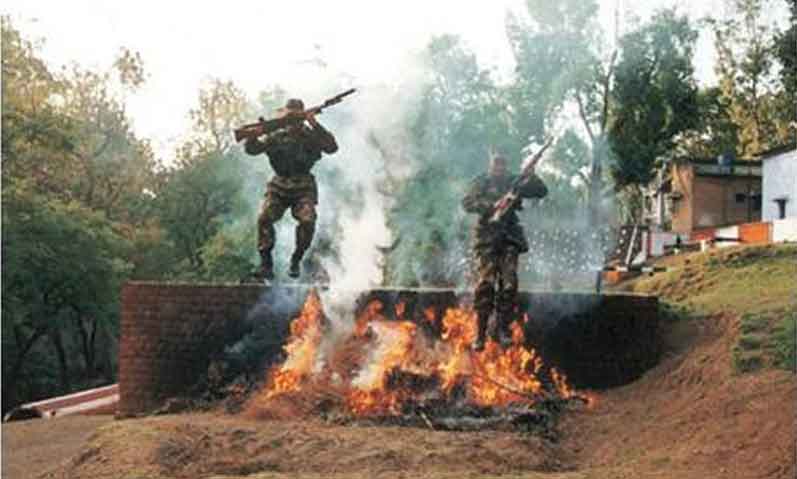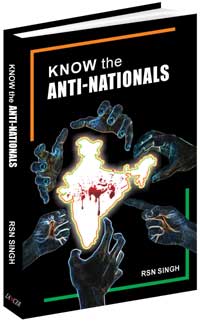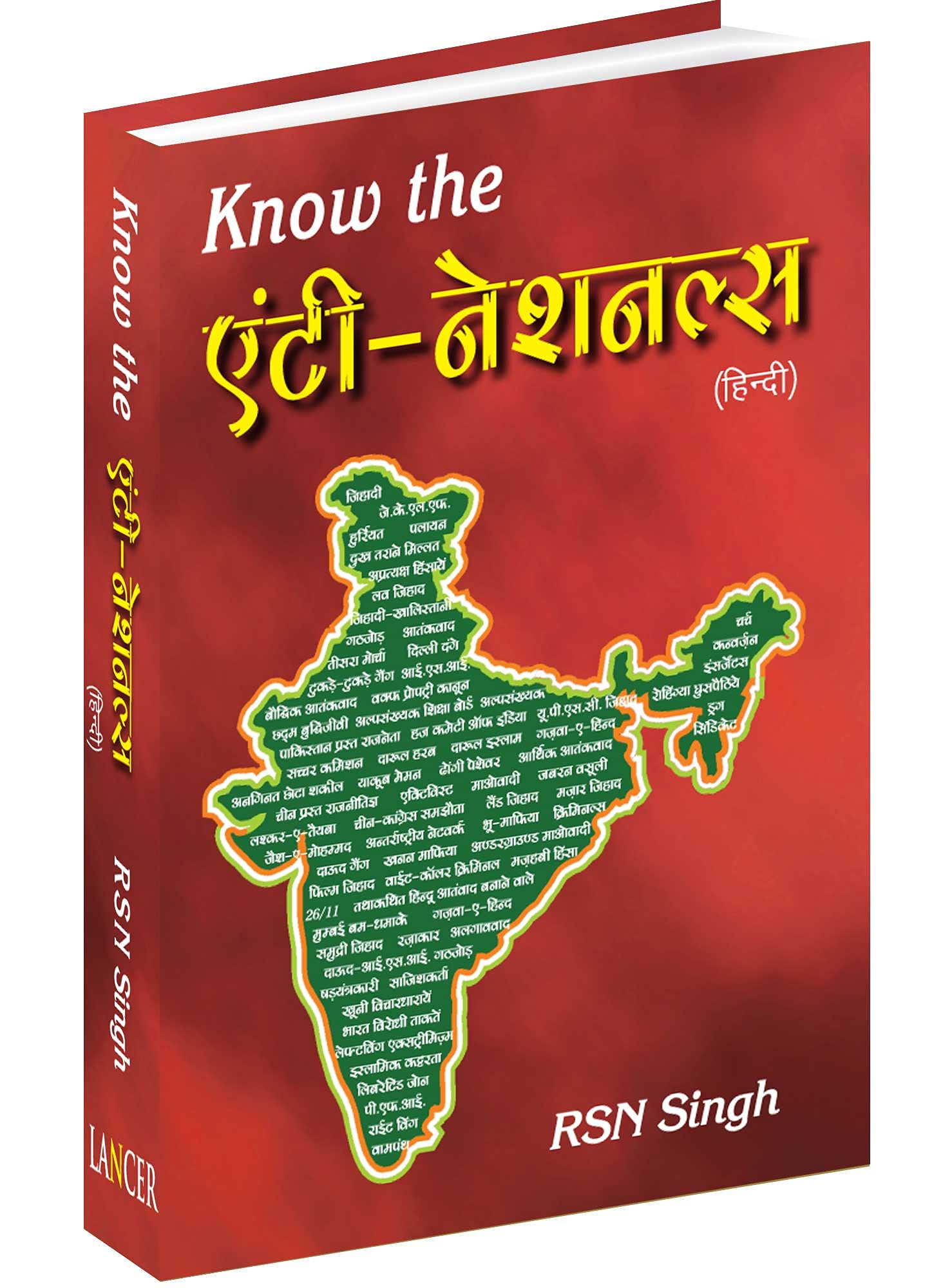Fire has two manifestations: Godly that creates, nurtures and sustains; and savage, that destroys and rejoices over the destruction of creations, achievements and accomplishments. The later variety was in stark evidence in many parts of the country, specially Bihar and some parts of Uttar Pradesh, Rajasthan, Haryana and Telangana ostensibly in protest against the Agnipath scheme which envisages recruitment of a young, amenable and moldable 17 year youth into men and women of steely character and purpose who can never fail the country and the society.
The protesters however appeared much beyond the pale of innocent and amenable youth of decent upbringing, they wore the ways of hardened criminals, eager to torch India. They burnt buses, set trains on fire, scorched police stations, looted shops and stoned passengers.So much has been said of India’s “Youth Dividend”, these incidents was an indicator of the downside of it and the failure to harness it for positive contribution to the nation.
Historically this has been the method of victorious Jihadi armies, communists also believe in similar ways. This meeting of mindsets has brought them together to forge a joint front against India. This joint front operates through the length and breadth of the country, with Kashmir, Kerala and Bengal being their strongholds. They were the architects of Shaheen Bagh, Delhi riots, Tukde-Tukde demonstration and now the arson and loot on specious opposition to Agnipath scheme. They are the fifth columnists within the country who act on the bidding of Pakistan and China.
The Mayhem and The Maoists
In Bihar the worst kind of mayhem was witnessed in Patna district in the areas of Pali, Msaurhi and Danapur. This area has been the hotbed of Maoism. In Danapur the miscreants tried to carryout disruptive activities right in the heart of the cantonment. Danapur is also the regional of headquarters of the Indian Railways. Several trains in Danapur junction were set on fire, passengers and shops were looted. Such was the level of disruption and destruction that normal services have yet not been restored. Today i.e. 23 June the railway has announced cancellation of 238 trains. The other badly affected areas in Bihar were parts of Gaya district and Jehanabad.
It may be recalled that in 2005 the Maoists had laid siege to Jehanabad town in the year 2005 and challenged the writ of the state. The said areas in Bihar have been ‘legislatively’ recaptured by Maoists by their electoral arm, the CPI (ML) who rely on arson and terror route in pursuit of their brand of politics. About half a dozen candidates of this over-ground Maoist outfit were successful in the last elections from these very areas with the active support of their ally, the RJD. The politician who led the assault in Danapur Cantonment and Railway Station represents the Pali constituency. He has been an active member of the Tukde-Tukde gang. Other parts of Bihar witnessed exactly the same pattern of arson and loot.
The uncanny similarity made it evident that they were orchestrated rather than spontaneous. Hyderabad too was rocked by similar pattern of arson and violence. It may be mentioned that in the Jehanabad siege it were the Maoist cadres from Telangana who were in the forefront. In the mayhem at Hyderabad railway station, the jihadi cadres too had lent their violent weight.
The fact that the CPI (ML) comprises over- ground Maoists is not lost out on the Indian establishment. For many years they were banned. The ban was lifted once they gave an undertaking that they would abide by the Constitution and repudiate arms. Nevertheless only the methodology has changed, in spirit they remain anti-India terrorists. It is rather far- fetched to expect that this Chinese proxy insurgent political party should demonstrate concern about the well being of the armed forces. It was their comrades who kidnapped a retired jawan Shyam Kishore Prasad in Jharkhand and demanded a ransom of ten lakh rupees. His brother, Raj Kishore Prasad, a Group Captain and fighter pilot in the Indian Airforce ran from pillar to post, met the DGP, the Chief Secretary, but of no avail.He had no option but to pay the ransom before the deadline to recover his brother alive.
The same Maoists had made former Air Chief La Fontaine hostage in his house not once but twice in rural Telangana where he had chosen to lead his retired life. They barged into his house, tied him up in his chair, looted his house and carried away everything including his pistol. He angrily reproached them, saying that they were not revolutionaries but dacoits. The same elements had danced all night in JNU when 76 policemen were mowed down by Maoists in Chhattisgarh in 2010, the same elements were in the ‘Bharat Tere Tukde Honge’ demonstration in JNU, and the same elements were the architects of Shaheen Bag.
Their pain is not Agnipath, but their evil design is to subvert the armed forces. They have been at it for very long, more so since 2014, since this took over power. They had even set up a BSF jawan to cause revolt in his organisation on an entirely fabricated issue of poor food service. He was subsequently court martialled but as planned he was pitted against the PM in Varanasi as one of the candidates in the Lok Sabha elections in 2019.
Political Subversion of National Security
Also, protesting against the Agnipath scheme was the Congress Party. They indeed majorly fuelled arson and violence all over. Their top leaders made speeches at Jantar Mantar that was music to India’s enemies. One of them said that the scheme will attract youth without character. It is the same anti-India luminary who had questioned the veracity of Batla House encounter and the integrity and character of our security forces. In a public meeting these so called leaders had lamented the loss of lives of the jihadis in the encounter. The Party leaders had signed a secret MOU with China in the overbearing presence of Xi Jinping. This was at the same time when the Jamiat-e-Islami (JeI) of Pakistan had signed a similar MOU with China.
Imperatives of Contemprary Soldiering
There will always be a defence budget, and in that, there will always be conflict and debate on Revenue Expenditure versus Capital Expenditure. It is the threat perception, evolving technologies and the Revolution in Military Affairs (RMA) that dictate the Capital expenditure outlays, as well as the recruitment policies. There is nothing such as Traditional Soldiering and Modern Soldiering. What is always at stake is contemporary soldiering in a given threat environment. In this regard there are several examples in our context.
For nearly 1300 years all Muslim invasions came through the mountain passes, but 2008 was the first time that the jihadi attack on India (26/11) was through the maritime route thus entailing greater capital expenditure on maritime resources. Similarly with the rapidly increasing use of drones by Pakistan Military backed jihadisin, the unmanned aerial dimension of jihadi threat is the new reality, thereby compelling us to invest adequately on drone and anti-drone systems. As warfare moves into the unmanned platforms domain, it is bound to have corresponding impact on recruitment systems.
Agnipath not Unprecedented
Is Agniveer type of recruitment unprecedented? Certainly not. Is the scheme a modified version of ‘conscription’? May be.On the onset of World War-II there was an abnormal requirement of manpower, consequently the British rulers raised army of 2.5 million. On culmination of war they were sent home without any pension. Their rehabilitation was a problem that was passed on to the Indian government on transfer of power. The financial condition of fledgling Independent India and the existing threat perception precluded any such exercise. This was the biggest voluntary army ever raised anywhere in the world. One of the reasons for them to get recruited was crushing poverty due to economic exploitation by the British. This was compounded by the British created artificial famine in Bengal. This war also engendered a radical sociological shift with regard to the catchment areas and segments of population for recruitment. Unnerved by the 1857 War of Independence the British stopped recruiting soldiers from the catchment areas of erstwhile Bengal Presidency. It were the soldiers (Lal Kurtis) from this presidency who fought the Afghan Wars, the Anglo-Gurkha Wars and Anglo-Sikh wars. In 1857 the soldiers of this presidency rose in revolt. The British by then had ingratiated those segments who had suffered defeat at the hands of the Bengal Army, and pitted them against the nationalists. With the help of these forces the British were able to crush the revolt. Out of gratitude and in consonance of divide and rule these very forces were designated as martial races. The bluff of martial races was busted in less than hundred years when the World War II broke out and the British faced the crisis of very survival. Then they found martial virtue in every segment of the Indian society, and consequently recruitments became sociologically widespread. Hence it was the threat perception that forced the change in recruitment pattern.
Tectonic Change in Rural India
Meanwhile the socio-economic profile of the catchment areas of recruits has undergone tectonic change. This author comes from a village which is 50 kms away from Patna. This village has 24 hours electricity, every house has television and motorcycle, and there are five school buses operating in this village, most adults have mobile phones ranging from Rs.20,000 to Rs.30,000 cost. This is true for 80 percent of Bihar. The youth are much more tech savvy though they may be lacking in graded variety of education. They are much more aware and articulate. Oral medium of information flow has subsumed the written medium. These youth cannot be viewed only through caste and class prism for recruitment and regimentation as the British did. They today need a larger identity and that could be” Agniveer”.
And finally the rationale, philosophy, imperative and objective behind the Agnipath scheme. The aim is: to reduce the average age profile from 32 to 26 to reduce revenue expenditure in favour of capital acquisitions; to technologically transform the armed forces in keeping with the imperatives of the rapidly changing battlefield environment, non-traditional objectives of war and interpretations of victory and defeat. The biggest problem that confronts the nation is not employment but employability. There is indeed deficiency of youth who combine talent with character. A boy from a rural areas of 17 is innocent, amenable, adaptable, moldable and fast on uptake. That may not be said of modern Urban youth. To the jawans we need to impart skills that are critical for war.
India today is one of the fastest growing economies in the world. According to the economic survey of 2021-2022 India’s ranking with regard to start upsis third, only after US and China. The number of new start ups in 2016 and 2017 was 733 which in five years increased twenty fold i.e. to 14000. It can never be the case that the Agniveers will not be successful in any endeavor. Like the armed forces every organization and enterprise requires loyal, disciplined and talented (in that order) individuals. There is the popular wisdom that if children are handled properly between 16 and 21, they can never go ashtray, and will emerge as responsible and productive members of the family and citizens of the country.
Today India has a big problem of disoriented youth. In many parts of the country they are extremely susceptible to drug abuse. Large numbers of youth are suffering from psychological afflictions, leading wasteful lives. Narcotics from Pakistan has consumed the youth of Punjab. Such youth are burden on their family, society and country.
Conclusion
The sociological osmosis of Agniveers is likely to be tremendous. Those who will be absorbed in the armed forces will be assets to the armed forces, and those who join other organisations, enterprises and take up other occupations will also be assets to the respective persuasions. In the overall analysis they all will be national assets.







